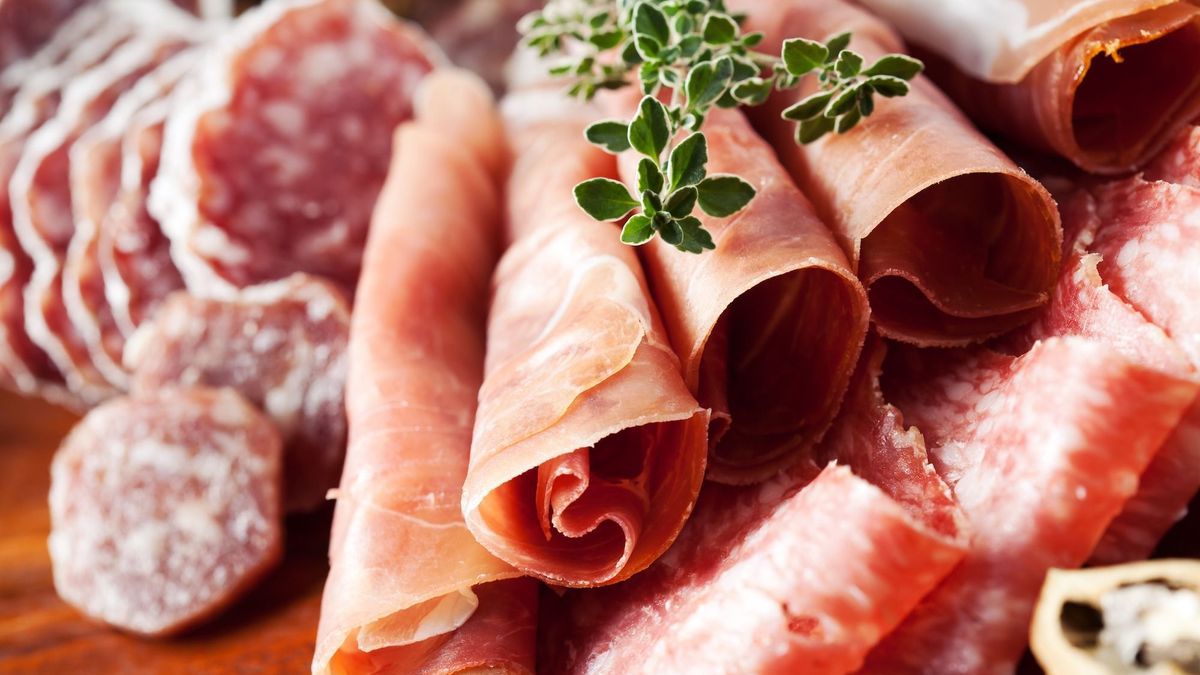
Also called “sodium nitrite”, this food additive, mainly used in cold meats, is also in the spotlight because of its potential dangerous effects on health. What is E250 food additive? What are the roles of sodium nitrate? In what foods can it be found? And what are its effects on our body? We take stock.
Sodium nitrite is part of the large nitrite family. It is obtained as a by-product during the industrial synthesis of nitric acid. Its chemical formula is NaNO2. It comes in the form of a fine white powder. Added to food, it does not add an odor to the product, but it slightly modifies the taste by adding a salty note. Sodium nitrite is listed in the Codex Alimentarius as a color fixer and preservative. It is authorized as a food additive in the European Union in accordance with Annex II of Regulation (EC) No. 1333/2008 on food additives.
What are the roles of sodium nitrite?
The E 250 has very diverse uses.
- In the food industry, it is used as preservative food by preventing the development of pathogens (microbes, bacteria, fungi, etc.) dangerous to human health, such as listeria monocytogenes, Salmonella or even Clostridium botulinum, the agent responsible for botulism.
- This product is also used as agent colorant : it gives a beautiful pink color to meats and cold meats, in order to make these foods more attractive to the consumer. This is the reason why the ham is pink with nitrate and gray when this additive is no longer added to its composition.
Where is E 250 found: in which foods?
This preservative is present as an additive in certain prepared dishes as well as in numerous food products based on processed meat and cold meats such as cured meats, cold meats (bacon, ham, bacon, rillettes, dry sausages). …), chicken roasts, pork tenderloin matches, most brined products, foie gras…
In industry, sodium nitrite is generally used mixed with table salt (NaCl) to obtain “nitrite salt”, which contains approximately 0.6% sodium nitrite. The incorporation takes place during brining, at the start of manufacturing.
According to Inserm, more than 15,000 packaged products on the French market currently contain added nitrites or nitrates.2.
Finally, sodium nitrite is also used in the pharmaceutical field.
How to spot this additive in food?
Just look at the ingredient list. It is hidden under the code name E 250 or the name “sodium nitrite”.
Is this preservative and coloring compatible with all diets?
Being of natural origin, sodium nitrite is compatible with vegan, vegan, but also halal, kosher and gluten-free diets. However, since foods containing the preservative E 250 are mainly meat products, they are often incompatible with these consumption methods.
Is E250 dangerous for your health?
Yes, large and prolonged consumption of sodium nitrite is considered toxic.
Sodium nitrite prevents the fixation of oxygen
The first dangerous effect of E 250 is that it prevents the fixation of oxygen on the hemoglobin molecule, which promotes the development of a disease called “methemoglobinemia”. Methemoglobins are a form of hemoglobin, incapable of transporting oxygen efficiently in the body. They develop when nitrite consumption is in excess. This disease causes cyanosis (marked by the bluing of the lips, skin and mucous membranes), headaches, respiratory problems, heart problems and, if the methemoglobin level reaches 70% in the blood, death.
E 250 a cancer
Another danger: sodium nitrite is considered potentially carcinogenic. During the digestion of this substance, carcinogenic N-nitroso derivatives can be formed in the body, in particular nitrosamines, capable of inducing mutations at the DNA level. This is the reason why in 2015, the IARC (International Center for Research on Cancer) classified processed meats as carcinogenic for humans, and, in 2022, ANSES (National Agency for Health Safety of food, environment and work), confirms that there is indeed an association between the risk of colorectal cancer and exposure to nitrites and/or nitrates, via the consumption of cold meats.
E 250 and type 2 diabetes
In 2023, a study carried out jointly by Inserm and INRAE reveals a link between nitrite consumption and the development of type diabetes. 22. According to the researchers: “Exposure to nitrite additives equivalent to a thin slice of ham per day is associated with a 53% increase in the risk of developing type 2 diabetes, compared to a person who does not eat processed meats..
What is the acceptable daily intake of E 250?
An Acceptable Daily Intake (ADI) is also established at 0.07 mg/kg body weight per day. According to EFSA, in a study carried out in 2017, “nitrite exposure resulting from its use as a food additive did not exceed this ADI for the general population, with the exception of a slight exceedance in children at the highest percentile.”. However, as a precautionary principle, it is advisable to limit the consumption of processed foods containing nitrites, and in particular cold meats. Currently, ANSES recommends not exceeding 150 g of cold meats and 500 g of red meat per week.
NO to diets, YES to WW!
What future for the E250 additive?
A bill relating to the gradual ban on nitrated additives in cured meat products was made to the National Assembly in December 2020. Sodium nitrite has now been banned in cured products since January 1, 2023. January 1, 2025, it will also be banned in all other charcuterie products. During this transition period, other articles provide for a reduction in the doses used.
